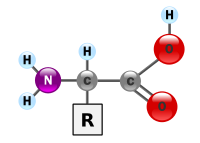
Photo from wikipedia
The syndrome of Relative Energy Deficiency in Sport (RED-S) includes wide-ranging effects on physiological and psychological functioning, performance, and general health. However, RED-S is understudied among male athletes at the… Click to show full abstract
The syndrome of Relative Energy Deficiency in Sport (RED-S) includes wide-ranging effects on physiological and psychological functioning, performance, and general health. However, RED-S is understudied among male athletes at the highest performance levels. This cross-sectional study aimed to investigate surrogate RED-S markers prevalence in Norwegian male Olympic-level athletes. Athletes (n = 44) aged 24.7 ± 3.8 years, body mass 81.3 ± 15.9 kg, body fat 13.7% ± 5.8%, and training volume 76.1 ± 22.9 hr/month were included. Assessed parameters included resting metabolic rate (RMR), body composition, and bone mineral density by dual-energy X-ray absorptiometry and venous blood variables (testosterone, free triiodothyronine, cortisol, and lipids). Seven athletes (16%) grouped by the presence of low RMR (RMRratio < 0.90) (0.81 ± 0.07 vs. 1.04 ± 0.09, p < .001, effect size 2.6), also showed lower testosterone (12.9 ± 5.3 vs. 19.0 ± 5.3 nmol/L, p = .020) than in normal RMR group. In low RMRratio individuals, prevalence of other RED-S markers (-subclinical-low testosterone, low free triiodothyronine, high cortisol, and elevated low-density lipoprotein) was (N/number of markers): 2/0, 2/1, 2/2, 1/3. Low bone mineral density (z-score < -1) was found in 16% of the athletes, all with normal RMR. Subclinical low testosterone and free triiodothyronine levels were found in nine (25%) and two (5%) athletes, respectively. Subclinical high cortisol was found in 23% of athletes while 34% had elevated low-density lipoprotein cholesterol levels. Seven of 12 athletes with two or more RED-S markers had normal RMR. In conclusion, this study found that multiple RED-S markers also exist in male Olympic-level athletes. This highlights the importance of regular screening of male elite athletes, to ensure early detection and treatment of RED-S.
Journal Title: International journal of sport nutrition and exercise metabolism
Year Published: 2021
Link to full text (if available)
Share on Social Media: Sign Up to like & get
recommendations!